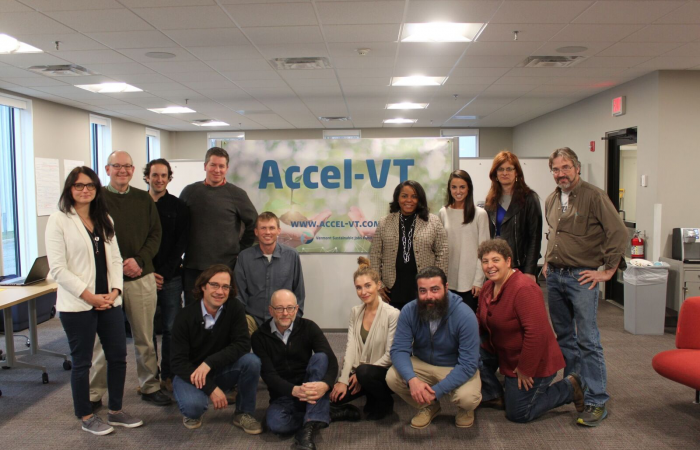Growing up in Maine in the 70s and 80s, designer = glamorous cool; engineer = socially awkward geek. I blame societal conditioning.
My father was an engineer and my mother a math teacher; they definitely encouraged me in what is now called STEM. On the farm in Gorham where I grew up, they had me to do all the things my brothers did – even taking Hunter Safety at the Rod & Gun Club. But I had no interest in “masculine” stuff, including engines. That’s what I thought engineering was about. Perhaps I rebelled. I was artistic, creative – the opposite of a nerd. Social sciences, maybe. But not hard science.
 I ended up getting degrees in Economics and Government. Bouncing around after college, I found myself in NYC, where I was offered textile design work. My fate was sealed. I wasn’t formally trained for it, but it came naturally. Design is all about figuring out the best solution to a problem, optimally in a visually appealing way. It was perfect for me.
I ended up getting degrees in Economics and Government. Bouncing around after college, I found myself in NYC, where I was offered textile design work. My fate was sealed. I wasn’t formally trained for it, but it came naturally. Design is all about figuring out the best solution to a problem, optimally in a visually appealing way. It was perfect for me.
In those days, computer graphics and processing power were nothing like they are today, so textile designs were all painted in painstakingly detail by hand on large sheets of paper. But I loved it. I got plenty of work. I designed textiles, casual clothes, backpacks, gloves, mittens, hair accessories – whatever companies needed. After a year or two, I was offered a job in Hong Kong.
I was up for the adventure. That trading company did mainly plush but wanted to get into giftware – the things you find in Hallmark stores. I didn’t do tchotchkes personally, but the boss said: “You’re a girl – you do the giftware.” It turned out I could be good at it. Buyers came, told me what they wanted, and I drew a picture of what to give them. There was an in-house sample making department and thousands of factories in southern China, eager to get the order, that had sample makers ready to do my bidding. I loved seeing how things were made. It was a very practical education – factory people explained to me why things couldn’t be made the way I wanted them, and how they saw the options; sometimes I learned technical parameters and sometimes I learned that the roadblocks they perceived could be overcome with the redesign. Cost considerations hung over everything. Not just the costs of the raw materials, but the cost considerations of time, prototyping, assembly, packaging and shipping, and sometimes marketing.
Eventually, I came back to the US to work for a wholesale distributor in Minneapolis, where I met an electrical engineer who had a business making 3D non-contact sensor systems. Very different. We married, and I stayed home and focused on children.
Ten years later, sneaking suspicions gave way to our worst fear: his sales partners were pirating his systems. We got calls to fix the fakes. None of the customers believed us – or cared. Fortune 500 companies such as Benchmark, government agencies such as the Jet Propulsion Lab – to this day, many of them still buy the pirated systems. The FBI didn’t care. When we sued, not one, but two federal judges here in Portland, without considering any actual evidence, decided in favor of the pirates. “A punch in the gut” is a cliché – but that’s the best way to describe the actual feeling. My husband needed someone he could trust. You could say I married into high-tech. It has been another practical education.
Even after ten years as a “woman in tech,” I still don’t identify with that label. I don’t call myself an engineer. But: again, I find the work suits me perfectly. I like to create things. The difference between an engineer and a designer, by the way, is the type of knowledge needed to solve the problem. Whether it’s the properties of greige goods or shiny metals, “Designers” and “Engineers” are both practical problem solvers. Some solve problems with computer code and electrical circuitry; others with graphics or fabric. I used to convey my ideas in gouache; now they’re conveyed in 3D modeling software. It’s creativity. We’re all creative, whatever we create, whatever we call ourselves.
I love what I do, which today is focusing on creating the business and product that is Apricart. Apricart is a smart-shopping cart designed to make shopping in brick-and-mortar stores more enjoyable and rewarding by converging the personalization of online shopping with real-life shopping in brick-and-mortar stores. I don’t do it alone, of course. I work with a team that is very specialized and very technical. So regardless of my self-image or inclination, in the scrum of it, I am “a woman in tech.” Hopefully, there will be more women in tech tomorrow.
Society is changing for the better. Tech is cool now. More women are entering STEM professions. My daughter’s elementary school demystifies engineering by having it as another “special” class – like Art or Music. Volunteering there recently, I was amazed by the proficiency of her classmates to build and describe electric circuits. Hopefully in the future gender distinctions will become irrelevant in the workplace, and we will recognize and celebrate knowledge and creativity in all its forms.
Allegra McNeally is the founder and CEO of Apricart is a smart shopping cart that vastly improves the shopping experience for retail grocery shoppers while gathering important path-to-purchase data for consumer packaged goods marketers and grocery stores. She is also the vice-president at VisionMaster a manufacturer of fully automated 3D Solder Paste Inspection Systems based in Portland, Maine.



